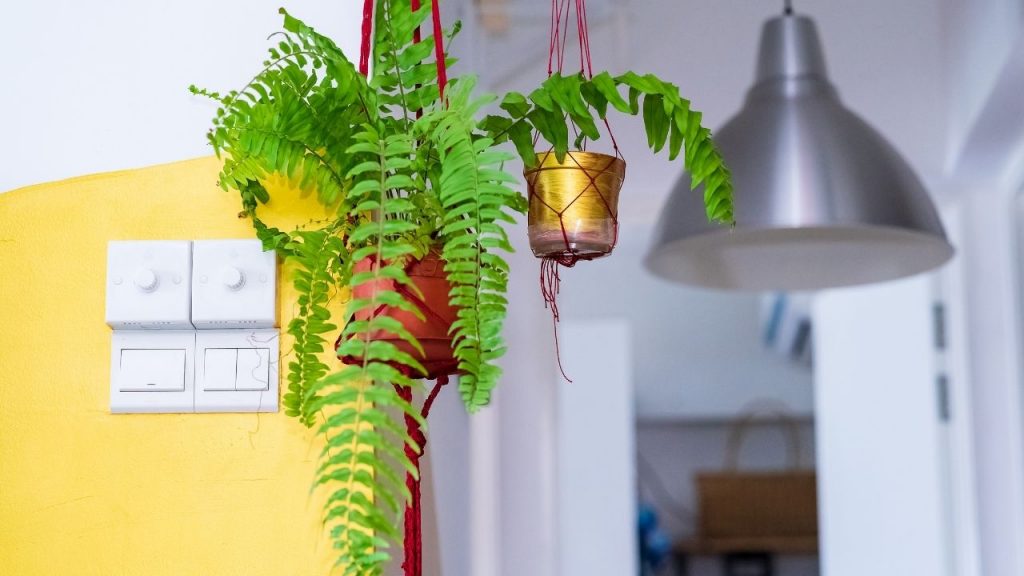Basics of Fern Care: Identify And Care For Your Ferns
Ferns have been around for millions of years; since the time of the dinosaurs! There are now 20,000 species of ferns!
It would be impossible to describe all the various care requirements in one article for all of them. What we can do though is talk about some of the basics of how to identify your fern and general care for it.
1. How to Identify Your Fern

Check the fronds and follow the stem to the base. If it has a fuzzy rhizome it is probably some type of rabbits foot fern or blue star fern. Also watch how they unfurl and how thick the fronds are. Are they fuzzy or smooth? What color are they? What is their shape?
How are the fronds arranged?…are they in a circle with a space in the center or are they all coming from a giant mound or hill in the middle.
Long and thin fronds with multiple leaves on either side shaped like a sword is probably some type of Boston fern. If the foliage is thick and leathery it is probably some type of Birds Nest Fern, Staghorn Fern or a Crocodile Fern. Cinnamon ferns will have some brown fronds and some green ones depending if they are male or female.
2. Humidity

The myth that all ferns need high humidity is just that..a myth. Generally the rule of thumb is bigger plants with bigger thicker foliage or in more established pots can handle a lower humidty. This is because they can create their own humidty bubble. Smaller potted ferns or ferns with thinner foliage will need a higher humidty. There are desert ferns like cloak ferns but majority of ferns prefer a humidty level between 40%-80%.
3. Water

There is another myth that ferns cannot dry out and like to sit in pots full of water. This is also not true. Bigger ferns in bigger pots can handle drying out more because they have the ability to store more water in their larger stems and foliage. Smaller less established ferns will need to be kept more moist more often because they will dry out more quickly and will not be able to hold as much water.
4. Lighting

Another common misconception with ferns is that they are all low light plants. This is not the case either. Ferns like light. Generally with the majority of ferns you can safely put them into direct morning light window. This means that as soon as the sun rises it will be shining on the ferns.
If you live in the southern hemisphere or a very hot bright place like Texas or Arizona where the morning sun is very intense consider pulling your fern back from the window a little. Especially if you notice any burning or if it is drying out to quickly.
Ferns like a lot of light generally because they are understory plants and get a lot of light that is just less intense due to some slight shade from the trees. Ferns do generally grow in the shade outdoors but when we place a plant in the “shade” indoors its is almost total darkness comparatively. Closer to a window with morning light is going to generally be better for a fern and you can give it a little more if there has been no growth for a few months and it does seem to be suffering damage. But under no circumstances should a fern be shoved in a dark room without any light.
5. Soil

Majority of ferns enjoy some type understory mix of bark, moss, and broken down materials. You can mimic the broken down materials with worm castings, potting soil, or compost. Then mix in some type of bark and moss. If it is still to dense you can add in some perlite.
Depending on your growing conditions you may have to adapt the mix. If you are outdoors and have a lot clay or a heavy natural soil mix you can add in something like perlite to break it up and make it more airy for ferns.
If you are growing indoors in a very moisture retentive peat based potting mix
6. Temperature

Majority of houseplants are tropical especially if they are a houseplant variety. With the exception of a Boston fern majority of them cannot handle temperature below 65°f-55°f. Tropical indoor ferns just won’t be able to survive below that.
Some ferns also have a winter dormancy period so if temperatures do cool down and your fern dies back make sure to save it and keep caring for it through the winter because it can possibly come back in the spring with warmer tempatures.
Some ferns that you can get in the outdoor section of your local nursery that can endure some freezing tempatures.
Not all ferns are tropical. There are lots of ferns that grow in the Pacific Northwest, Canada, even Alaska, and Antarctica.
So the temperature your fern can withstand will just depend on the type of fern it is.
This circles back to identifying your fern. It is very important to figure out what type of fern you have so you know exactly what you can be doing.
However, if someone just hands you a fern and says “Here. Take care of it.” It would probably be best to assume it is a tropical fern of some sort and act accordingly until more information is obtained.
Published at Sat, 30 Apr 2022 09:00:00 -0700
